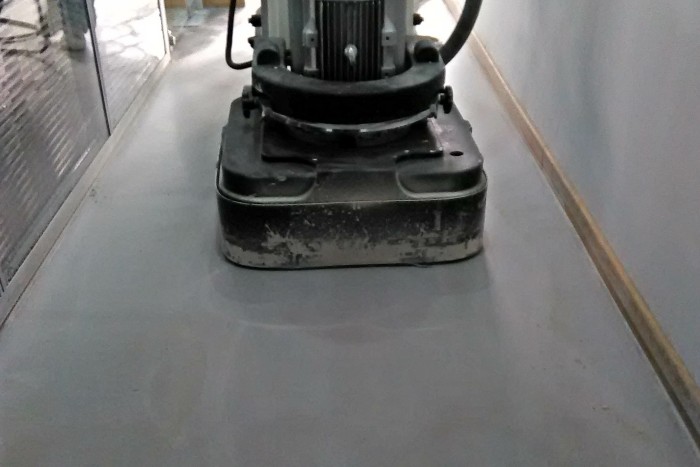
Concrete Grinding Process
Concrete grinding is a professional processing technology that involves the fine grinding and polishing of concrete surfaces using professional grinding equipment and materials. The process is designed to achieve a high level of flatness, smoothness and aesthetics on the finished surface.
1. Understand the Concrete Grinding Process
The concrete grinding process involves several key steps that transform a rough, uneven concrete surface into a smooth and aesthetically pleasing surface. Here is a breakdown of the process:
a. Surface preparation
Before you begin grinding, you must prepare the concrete surface. This includes cleaning the area to remove any dirt, debris, or contaminants that could interfere with the grinding process. In some cases, patching may be necessary to fill cracks or holes in the concrete.
b. Selection of grinding equipment
Professional concrete grinding requires specialized equipment, usually consisting of a grinder equipped with a diamond grinding pad or disc. The choice of equipment depends on the size of the area to be ground and the desired finish. Handheld grinders can be used for smaller areas or edges, while large floor grinders are suitable for expansive surfaces.
c. Grinding process
Once the surface has been prepared and the appropriate equipment has been selected, the grinding process begins. The grinder moves over the concrete surface, using a diamond grinding disc to remove the top layer of concrete. This process can be done multiple times, gradually increasing the grit of the grinding pad to achieve a smoother surface.
Rough grinding: The initial grinding stage typically uses a coarse diamond pad to remove surface imperfections and level the concrete. This step is critical to achieving the desired level of flatness.
Fine grinding: After rough grinding is complete, use a finer sanding pad to further refine the surface. This step improves surface smoothness and prepares it for polishing.
d. Polishing
After the grinding process is complete, the concrete surface can be polished to achieve a high gloss finish. Polishing involves using increasingly fine diamond pads to create a reflective surface. This step not only enhances the beauty of the concrete, but also improves its durability and stain resistance.
e. Sealing
To protect the polished surface and extend its life, a concrete sealer is often applied. This sealer helps prevent moisture penetration, staining and wear, ensuring the polished surface remains beautiful and functional for a long time.

2. The Role and Advantages of Concrete Grinding Technology
Improve the flatness of the ground
One of the main functions of grinding technology is to improve the smoothness of concrete floors. By fine grinding, surface irregularities and defects can be significantly reduced. Improved flatness has multiple benefits:
Enhanced user experience: The flat surface reduces the bumpy feeling when walking, providing users with a more comfortable experience. This is especially important in high-traffic commercial and industrial environments.
Safety: Improved flatness minimizes tripping hazards, providing a safer environment for employees and visitors.
Improved equipment performance: In industrial environments, flat surfaces are critical for the proper functioning of machines and equipment. Uneven floors can lead to inefficient operations and increased wear and tear on equipment.
Enhance wear resistance
The grinding process not only improves surface smoothness but also enhances the wear resistance of concrete floors. Here's how:
Surface particle compaction: During the grinding process, the fine particles on the surface of the concrete are compacted and polished. This compaction creates a denser surface that is more resistant to wear and tear.
Extended lifespan: Grinding technology helps extend the lifespan of concrete floors by improving wear resistance. This durability is especially beneficial in areas with high foot traffic and frequent use of the flooring.
Reduced maintenance costs: Enhanced wear resistance means floors are less likely to suffer damage over time, resulting in lower maintenance and repair costs.
Beautify the environment
Grinding technology greatly improves the aesthetics of concrete surfaces. This process can achieve the following effects:
Uniform color and texture: Grinding gives a consistent appearance across the entire surface, eliminating unsightly blemishes and discoloration. This uniformity enhances the overall appearance of indoor and outdoor spaces.
Polished surface: The polishing aspect of abrasive technology produces a high-gloss finish that adds elegance to any environment. This is especially popular in commercial spaces, showrooms and residential areas.
Multiple design options: Through grinding technology, a variety of finishes can be achieved, allowing for creative designs. The grinding process exposes decorative aggregate, adding a unique visual element to the floor.
Easy to clean and maintain
Another significant advantage of grinding technology is its ease of cleaning and maintenance:
Smoother surface: The grinding process results in a smoother surface that is less likely to accumulate dust, dirt and debris. This smoothness makes daily cleaning more efficient and effective.
Reduced cleaning costs: As dirt accumulation decreases, the frequency and intensity of cleaning required decreases, resulting in lower cleaning costs over time.
Hygienic environment: Smooth surfaces are easier to disinfect, which is especially important in environments where hygiene is critical, such as hospitals, kitchens and food processing plants.
3. Application of Concrete Grinding
Concrete grinding is used in a wide variety of applications, including:
Commercial spaces: Retail stores, showrooms, and office buildings often use polished concrete because of its beauty and durability.
Industrial facilities: Warehouses and manufacturing plants benefit from smooth, level floors that can withstand heavy machinery and foot traffic.
Residential properties: Polished concrete is increasingly being chosen by homeowners for basements, garages and outdoor patios due to its low maintenance and modern look.
-
Online service
-
Official wechat
account
-
QQ:40933769
-
E-mail:
sales@z-lion.com
Online service
Please feel free to give your inquiry in the form below. We will reply you in 24 hours.

